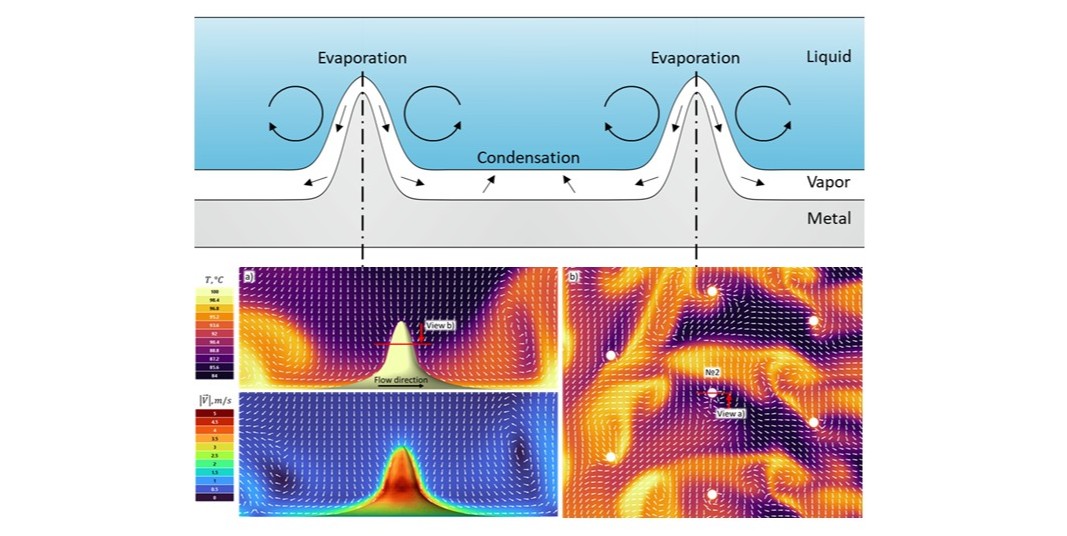Предложена модель пленочного кипения высокой интенсивности при охлаждении поверхности свободной струей недогретой жидкости. Модель позволяет объяснить регистрируемые в опытах высокие плотности теплового потока с поверхности нагревателя, не рассматривая её контакт с жидкостью. Основные соотношения модели получены при рассмотрении квазистационарной паровой пленки формирующейся между крупными неровностями поверхности нагревателя.
Пар, движущийся по пленке с высокими скоростями (десятки м/с), приводит к значительным касательным напряжениям на межфазной границе обеспечивая необходимую интенсификацию отвода тепла в жидкость. Возможность отведения требуемых плотностей теплового потока с межфазной поверхности в указанных условиях подтверждается моделированием трехмерной картины течения с помощью расчета в программном комплексе вычислительной гидродинамики FlowVision.
A model of high-intensity film boiling of subcooled liquid is proposed for jet impingement cooling. This model allows us to explain the high heat flux densities on the surface recorded in experiments without taking into account direct contact with the liquid. The core assumptions of the model are based on the formation of a stationary vapor film that forms on large asperities on the heater surface. Vapor moving at a high speed leads to significant shear stress at the interfacial boundary. It has been shown that this shear stress can generate powerful small-scale vortices (several m/s intensity) in the liquid above the film, which enhances heat transfer into the liquid and ensures sufficient heat dissipation from the surface. A three-dimensional flow simulation was performed using the commercial computational fluid dynamics software FlowVision to validate the model. The simulation confirmed the possibility of achieving the required heat transfer rates under these conditions, confirming the validity of the proposed model.
© 2025 Author(s). Published under an exclusive license by AIP Publishing https://pubs.aip.org/aip/pof/issue/37/8

